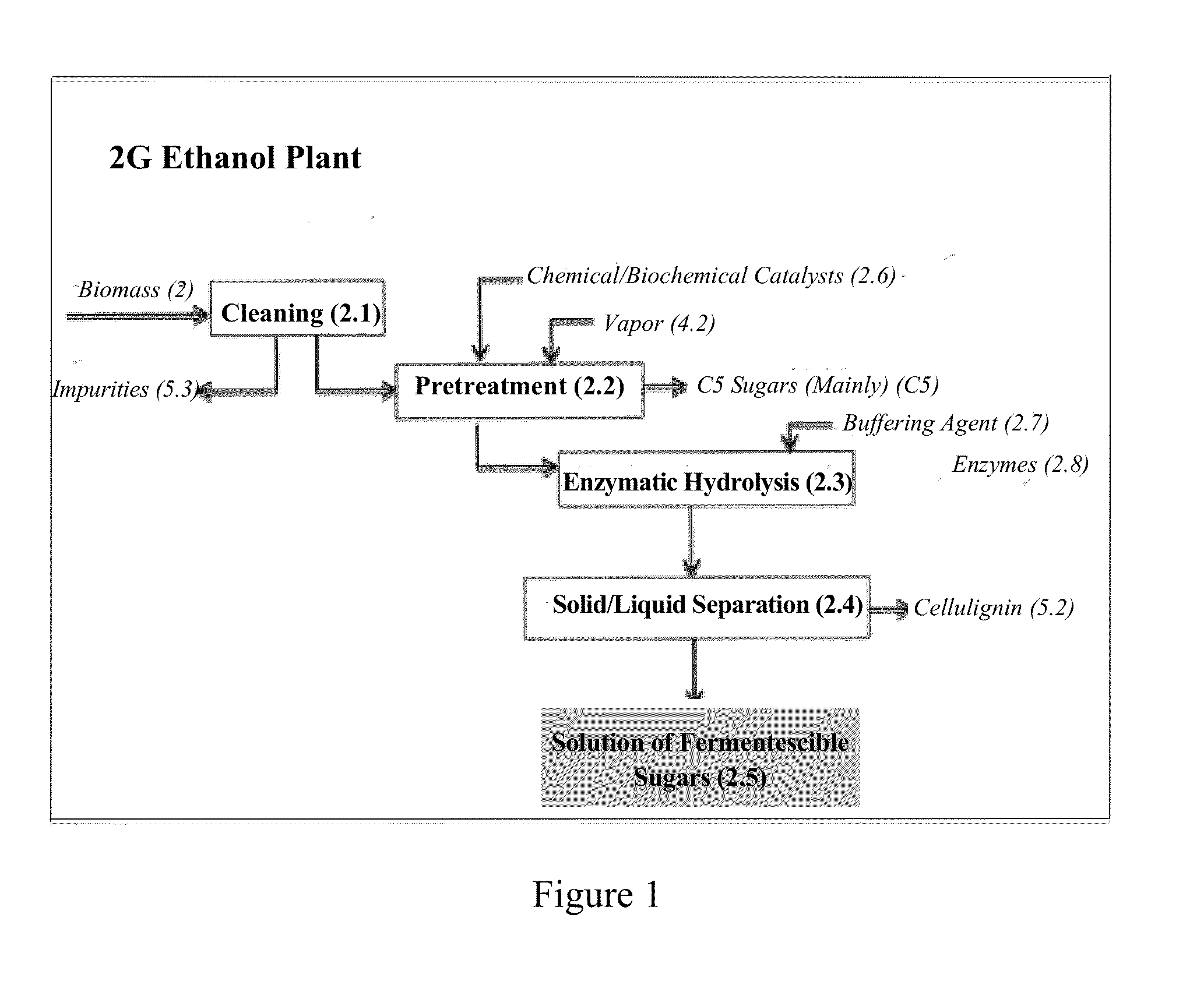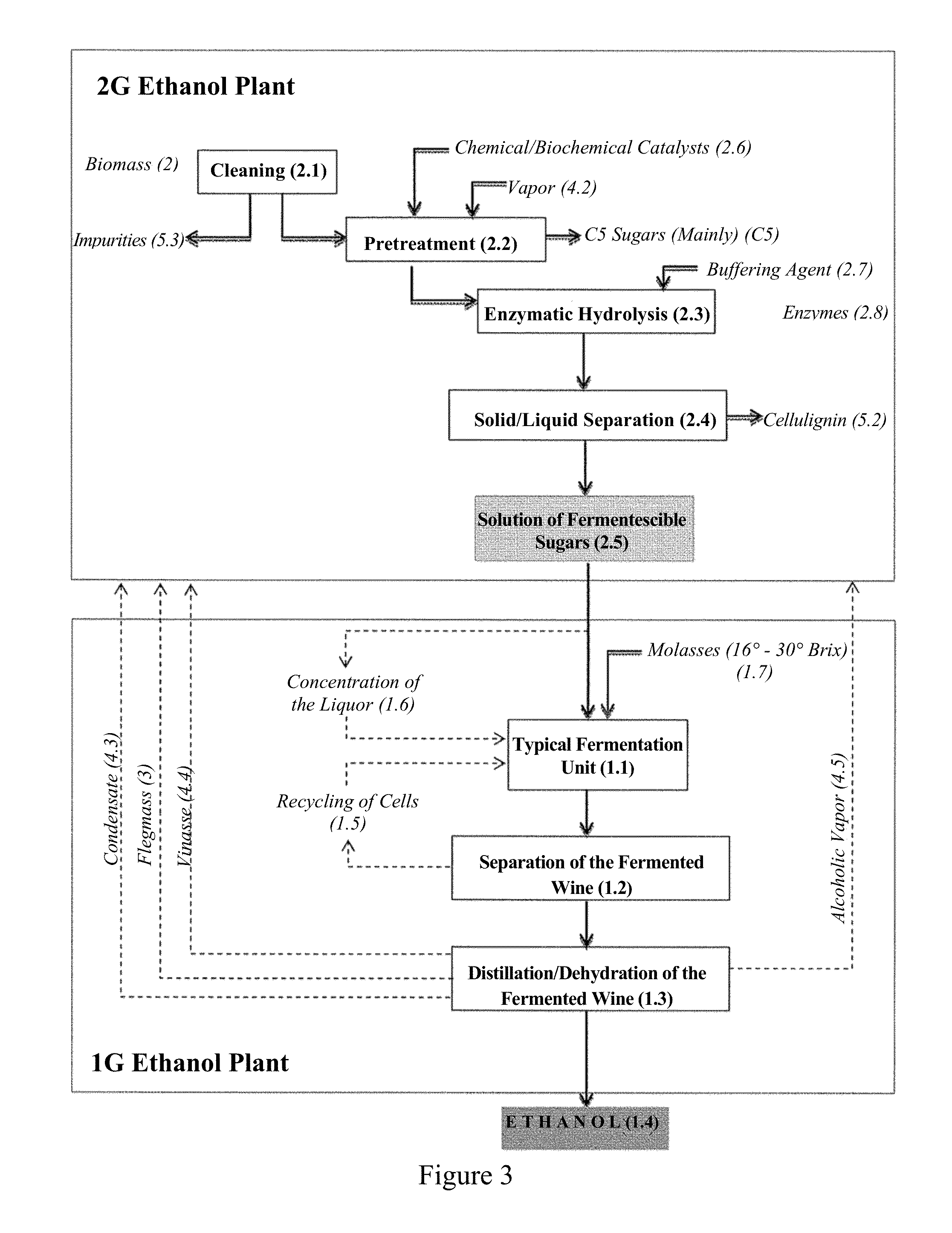System and method for the integrated production of first and second generation ethanol and the use of integration points for such production
a technology of first and second generation ethanol and integrated production, which is applied in the direction of sustainable manufacturing/processing, energy input, biomass after-treatment, etc., can solve the problems of not having a plant already installed and relevant commercial scale production capacity, and the article fails to consider the thermal integration of the first and second generation processes for the production of ethanol, and the reuse of effluents
- Summary
- Abstract
- Description
- Claims
- Application Information
AI Technical Summary
Benefits of technology
Problems solved by technology
Method used
Image
Examples
example 1
[0159]The energy contained in the “flash” vapor stream (6) was reused to generate steam in the vessel (RF), by means of the use of one or multiple exchangers to recover, by indirect exchange, the energy contained in the “flash” vapor stream (6), generated after the pretreatment of the biomass by steam explosion or other techniques. The exchangers used were of the shell and tube and / or plate types, in their various configurations such as thermosyphon, “falling film” and others, for recovering, by indirect exchange, the energy contained in the “flash” vapor stream (6). In equivalent embodiments, there may be used one or more steam vessels (RF) for generating steam from the energy recovered from the “flash” vapor stream (6).
[0160]According to the concept of reuse of effluents, the flegmass stream (3) originating from the rectifying column(s) B and / or B1 or equivalent(s) thereof after the use in cleaning the fermenters, can be employed as a source of water for generating steam in the st...
example 2
[0183]This example illustrates a possible embodiment of the system, representing a practical application of the present invention.
[0184]The cleaning system (TL) is fed with 50 tons / day of biomass, the latter comprising about 2 to 15% by weight of impurities. This stream may consist in a composition, in any proportion, of bagasse and straw. Concurrently with the feeding of the biomass, about 5 m3 [cubic meters] per hour of flegmass (3) are fed, in continuous mode, to the system (TL). The flegmass will be used within the temperature range of 30 to 105° C., more preferably in the range of from 85° C. to 100° C.
[0185]Subsequently in the process, the biomass upon been cleaned and homogenized is preheated to a temperature in the range of from 80 to 150° C., using the stream (10) that originates from the steam recovery system (RF). After the pretreatment system (RPT), the biomass is rapidly decompressed in the “flash” system (TF), with the pressure varying in the range of from 26 barg to a...
PUM
| Property | Measurement | Unit |
|---|---|---|
| temperature | aaaaa | aaaaa |
| pressure | aaaaa | aaaaa |
| temperature | aaaaa | aaaaa |
Abstract
Description
Claims
Application Information
 Login to View More
Login to View More - R&D
- Intellectual Property
- Life Sciences
- Materials
- Tech Scout
- Unparalleled Data Quality
- Higher Quality Content
- 60% Fewer Hallucinations
Browse by: Latest US Patents, China's latest patents, Technical Efficacy Thesaurus, Application Domain, Technology Topic, Popular Technical Reports.
© 2025 PatSnap. All rights reserved.Legal|Privacy policy|Modern Slavery Act Transparency Statement|Sitemap|About US| Contact US: help@patsnap.com



